Basements are notorious for being wet because groundwater seeps in through the foundation. If your basement is always wet, even after you’ve tried to seal up the cracks, then you need to take steps to stop the groundwater. In this article, we’ll discuss how to stop groundwater in basement. Keep reading to learn more.
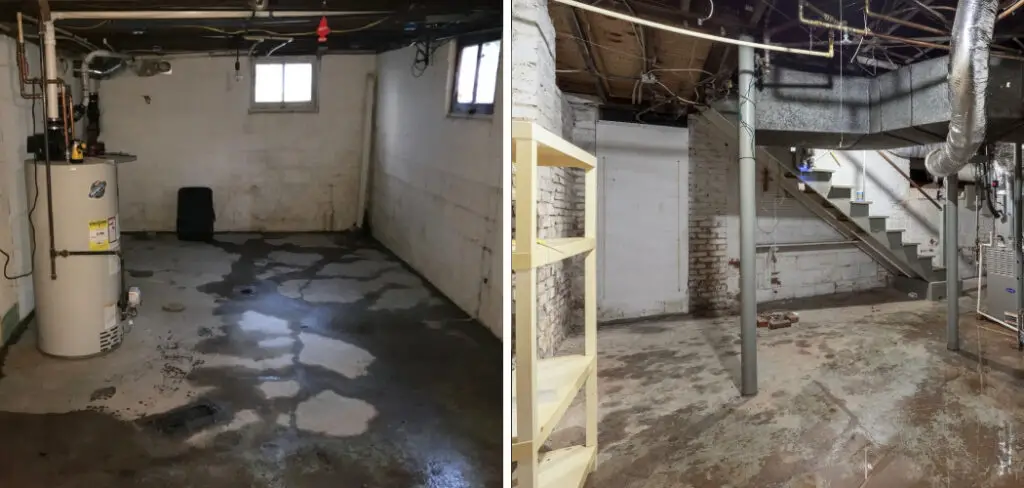
What Causes Groundwater in Basement?
There are a few things that can cause groundwater in the basement. The most common one is when the groundwater table is higher than the level of your basement floor. This can happen during periods of heavy rain or snowmelt. When this happens, the water will seep into any cracks or gaps in the foundation and cause your basement to flood.
Another common cause of groundwater in the basement is when the gutters and downspouts are not properly installed or maintained. If the gutters are full of leaves and debris, they will not be able to drain properly. This can cause the water to back up and seep into the foundation. Additionally, if the downspouts are not installed properly, they will not be able to direct the water away from the foundation.
This can also cause the water to seep into the cracks and gaps in the foundation. The other cause of groundwater in the basement is if there is a high water table in the area. This means that the ground is saturated with water and is trying to find a way to escape. The water will seep into any cracks or gaps in the foundation and cause your basement to flood. Finally, if the soil around your foundation is not properly graded, it can cause water to pool around the foundation. This can also lead to seepage and flooding.
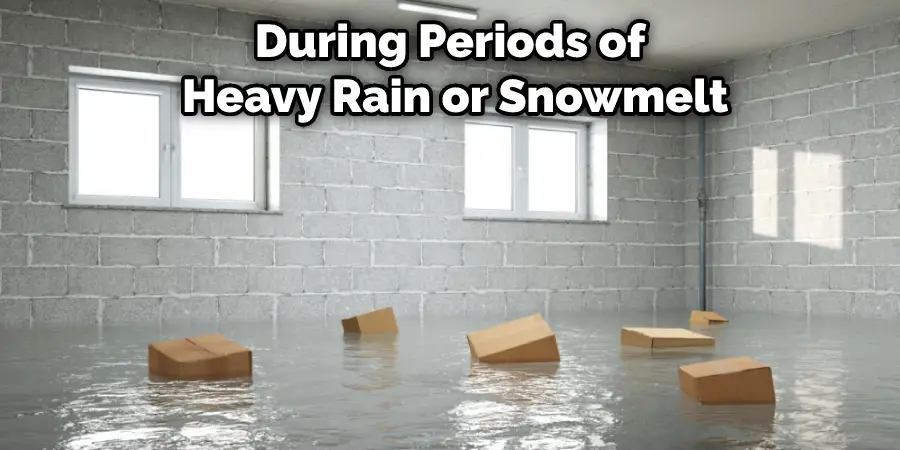
Why Is Groundwater in Basement a Problem?
Groundwater in the basement is a problem because it can lead to mold and mildew growth. Additionally, it can damage your belongings and cause health problems. The mold and mildew can cause respiratory problems, skin irritation, and other health problems. In addition, the water can damage your belongings, such as clothing, books, and furniture. Another problem with groundwater in the basement is that it can erode the foundation. This can lead to cracks and gaps in the foundation, which can cause your basement to flood.
Additionally, the groundwater freezes can cause the foundation to heave and crack. Finally, if the groundwater is not properly drained, it can lead to a pool of water around your foundation. This can attract mosquitoes and other pests.
Some Easy Ways How to Stop Groundwater in Basement
1. Identify the Source of the Water
The first step in stopping groundwater in the basement is to identify the source of the water. If you know where the water is coming from, you can take steps to prevent it from seeping into the basement. First, you need to check the gutters and downspouts to identify the water’s source. Make sure that they are clear of leaves and debris. Additionally, make sure that they are properly installed and maintained. If the gutters and downspouts are not sources of water, then you need to check the grading around the foundation. The soil should slope away from the foundation to prevent water from pooling around it.
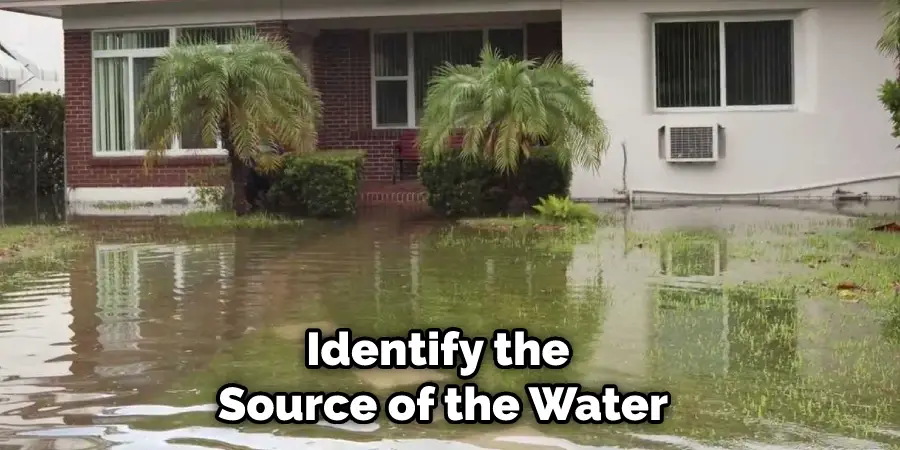
2. Install a Perimeter Drain
If the gutters and downspouts are not water sources, you must install a perimeter drainage system. This system will collect the water around the foundation and direct it away from the house. The system consists of a perforated pipe installed around the foundation’s perimeter. The pipe is connected to a sump pump, which will pump the water away from the house.
3. Extend the Downspouts
If the gutters and downspouts are not water sources, then you need to extend the downspouts. This will ensure that the water is directed away from the foundation. To extend the downspouts, you will need to purchase some downspout extensions. First, you need to measure the height of the foundation. Next, you must determine how far away from the foundation the downspouts need to be. Finally, you need to purchase the downspout extensions and install them. Avoid using plastic or metal downspout extensions. These materials can corrode and cause leaks.
4. Install a French Drain
You can install a French drain if the gutters and downspouts are not water sources. This system includes a perforated pipe that is placed in a gravel-filled trench. The pipe should slope away from the house at a rate of 1/8 to 1/4 inch per foot. The drain should be installed at least 10 feet from the foundation and terminate in an area that drains away from the house. First, mark the location of the trench with spray paint. Then, dig a trench that is 8 to 12 inches wide and 18 to 24 inches deep. Next, place a layer of gravel in the trench and then add the perforated pipe. Cover the pipe with additional gravel and then backfill the trench. Water will flow into the pipe and be carried away from the foundation.
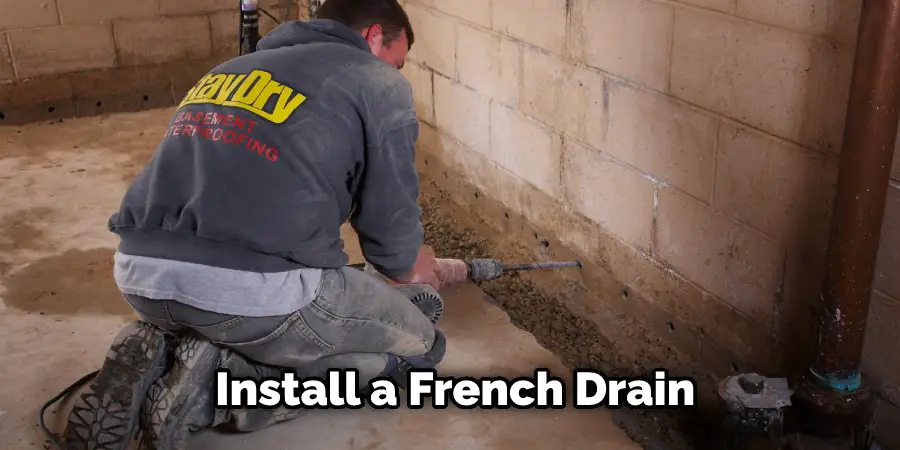
5. Grade the Soil
If the gutters and downspouts are not water sources, you need to grade the soil around the foundation. The soil should slope away from the house at a rate of six inches for every 10 feet. This will help ensure that any accumulated water will flow away from the foundation and not towards it. You can use a rake or a shovel to grade the soil accordingly. First, remove any debris from the area. Then, use the rake or shovel creates a slope away from the foundation. Be sure to pack the soil down as you go to create a solid slope. If you have any plants near the foundation, you will need to grade the soil around them as well. If you have any questions about how to grade the soil, you can consult with a landscaper or a gardening expert.
6. Install Gutter Guards
If you have gutters, you should install gutter guards. These devices will help keep leaves and debris out of the gutters, which will help prevent clogs. Gutter guards will also help reduce the amount of water that enters the basement. First, clean the gutters and downspouts. Then, install gutter guards over the gutters. If your gutters are already clogged, you may need to hire a professional to clean them out.
7. Repair Cracks
If there are cracks in the foundation, water can seep through them and enter the basement. To repair the cracks, you will need to use a concrete sealer. First, clean the cracks with a wire brush. Next, apply the concrete sealer to the cracks. Follow the instructions on the sealer carefully. Once the sealer is dry, you should apply a waterproofing agent to the cracks. This will help to keep water from seeping through the cracks in the future.
8. Ventilate Your Basement
One way to stop groundwater from entering the basement is to ventilate the space. This will help keep the air dry, preventing moisture from seeping in. To ventilate the basement, you will need to install an exhaust fan. The fan should be placed on a windowless wall. First, drill a hole in the wall. Next, insert the exhaust fan into the hole. Finally, seal around the edge of the fan with caulk. You can open a window to ventilate the space if you do not have an exhaust fan.
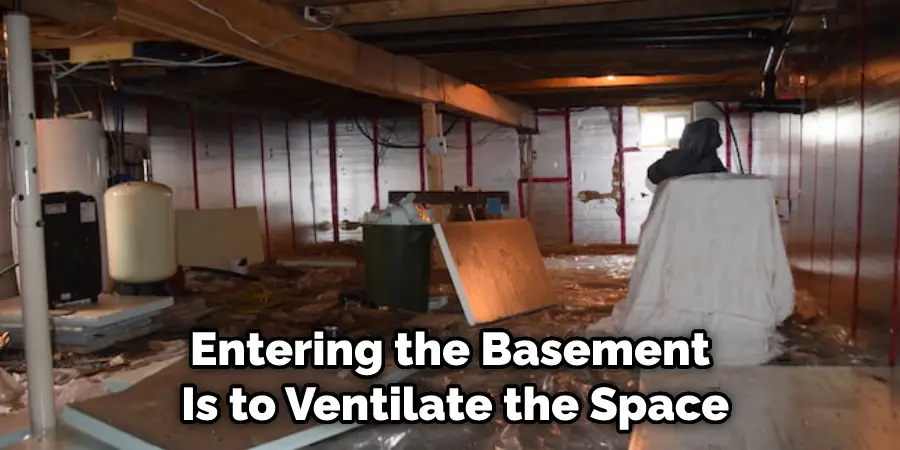
Tips and Warnings on How to Stop Groundwater in Basement
Tips:
- Check your gutters and downspouts to ensure they are clean and clear.
- Make sure your landscaping slopes away from your foundation.
- Inspect your foundation for cracks or gaps and seal them with concrete caulk or hydraulic cement.
- Install an interior drain tile system around the perimeter of your basement to collect and redirect water.
- Consider installing an exterior French drain to collect and redirect water before it ever has a chance to enter your basement.
Warnings:
- Do not attempt to seal cracks or gaps in your foundation unless you are confident in your ability to do so correctly. Hiring a professional is always the best option.
- Be sure to follow all manufacturer’s instructions when using any products to seal cracks or gaps in your foundation.
- Do not allow water to pool around your foundation. This can lead to serious problems down the road.
How Much Does It Cost to Stop Groundwater in Basement
The cost of stopping groundwater from entering your basement will vary depending on your methods. Hiring a professional to install an interior drain tile system can cost between $500 and $1,500. If you need to have an exterior French drain installed, the cost can range from $2,000 to $4,000. Sealing cracks in your foundation yourself can cost as little as $50, but hiring a professional to do the job is always the best option.
Conclusion
So there you have a few tips on how to stop groundwater in basement. If you follow these tips, you can keep your basement dry and prevent costly water damage. We hope you found this information helpful. Thanks for reading!
You Can Chack It Out Cool Basement With No Windows

